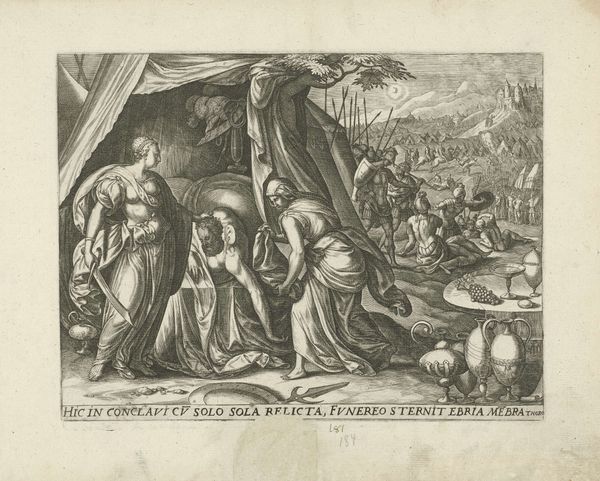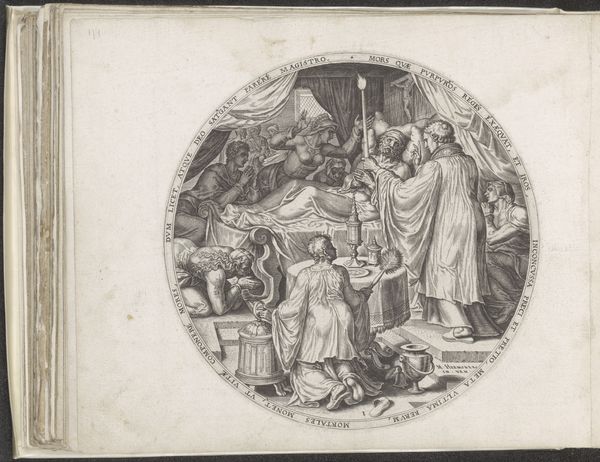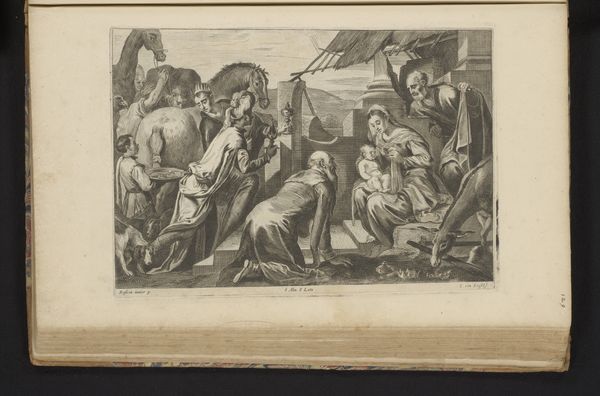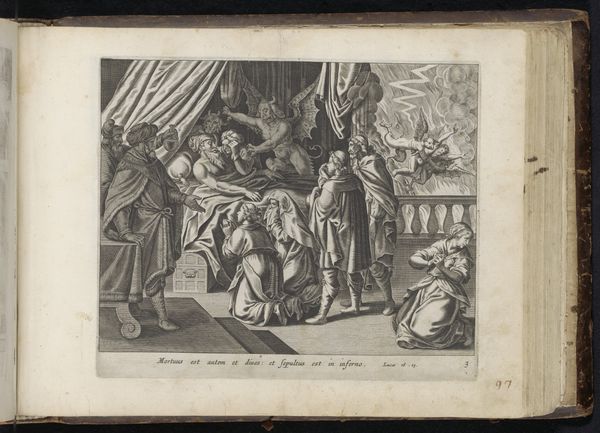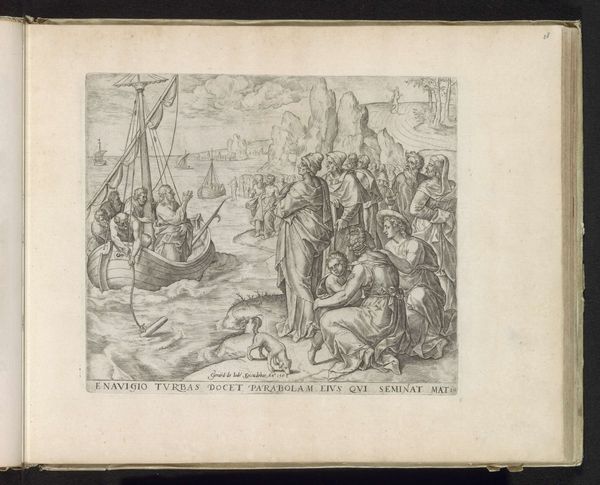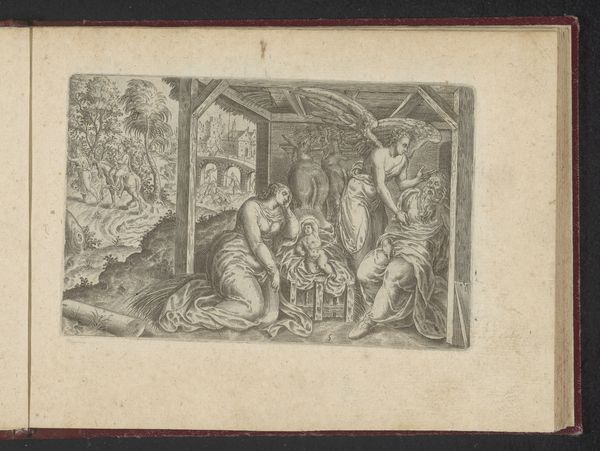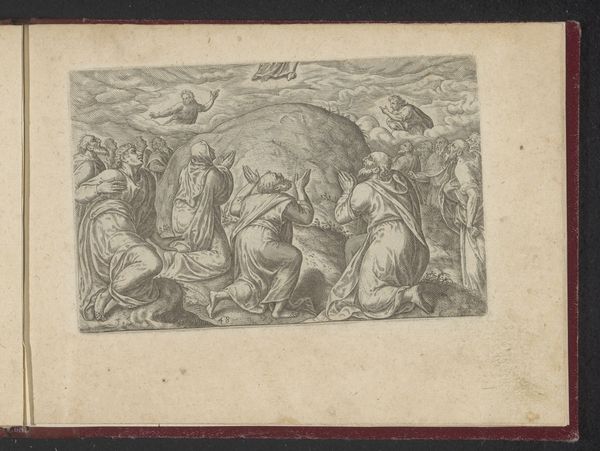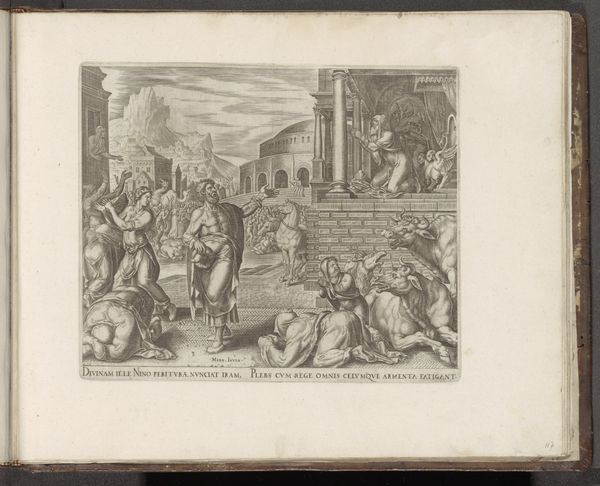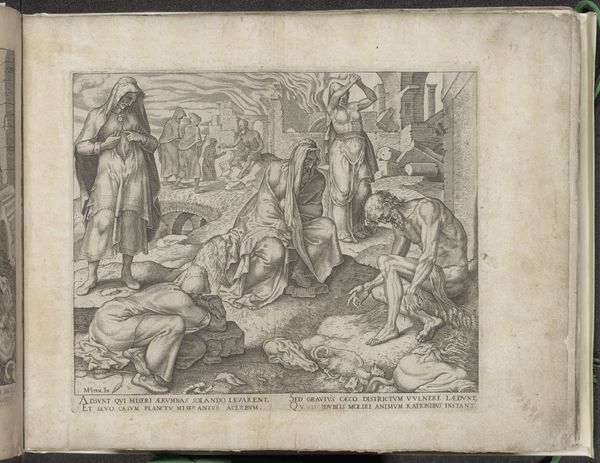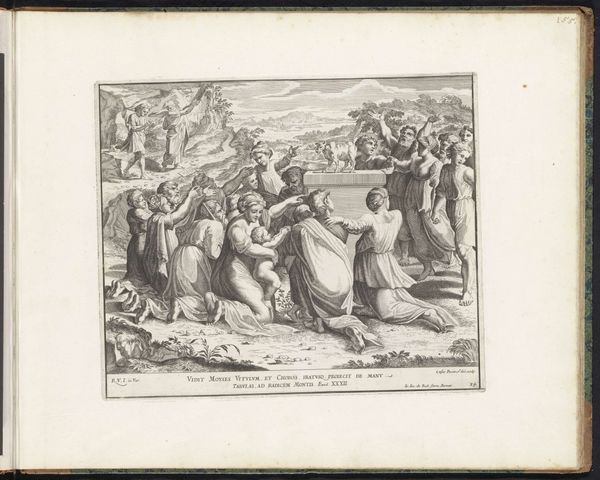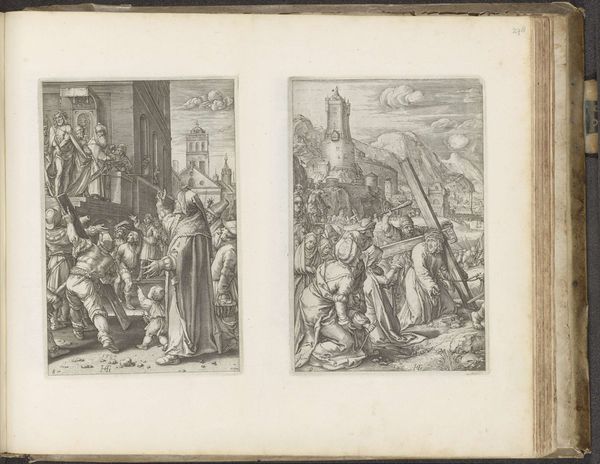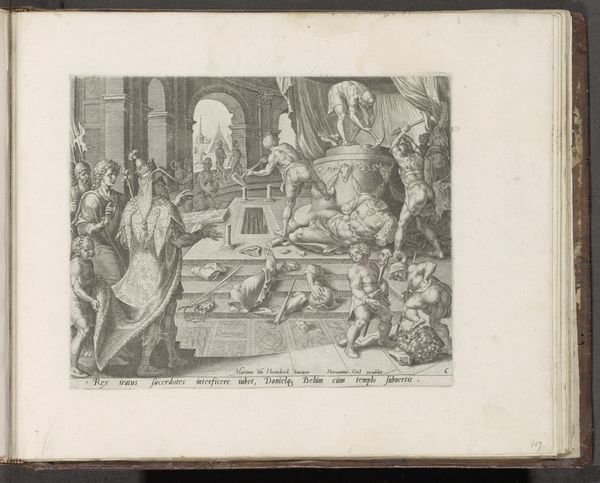
print, etching, engraving
# print
#
etching
#
figuration
#
history-painting
#
northern-renaissance
#
engraving
Dimensions: height 200 mm, width 262 mm
Copyright: Rijks Museum: Open Domain
Curator: Here we have a 1579 print by Jan (I) Snellinck entitled "Judith with the Head of Holofernes," currently held at the Rijksmuseum. It's a history painting rendered as an etching and engraving. Editor: Whoa. That's intense! There’s this chilling calm about Judith holding that sword, and then chaos erupting in the background...it’s like two different worlds colliding in one frame. You feel that weight, that story hanging in the air, you know? Curator: Absolutely. Snellinck situates the biblical narrative within a broader visual culture where female agency and violence were potent, if ambivalent, subjects. It's Northern Renaissance, so think moralizing narratives often tied to political themes. Editor: I dig it! I'm always fascinated by how artists of that era captured the light and shadow with such precision, but also how they just went straight for the gut in terms of storytelling. Check out the head! Pretty gruesome. The party outside. Judith's determined stance…it’s like, “Yeah, I just saved our town. What of it?” Curator: Note the strategic use of line work. The engraver meticulously contrasts light and shadow. Look how the soldiers behind Judith don’t seem to notice anything amiss. It speaks to both the drama of the immediate act, and the broader deliverance of her people. Editor: It's a testament to art’s power to speak across centuries. To provoke reactions in people still, get them thinking, you know? I also appreciate how the choice to use black and white lends a sense of gravity to the whole scene. I can almost feel the chill of the night and smell the spilled wine, gross! Curator: Well, in early modern Europe, images like these played an important role in constructing and circulating ideas about piety, gender, and power. These are not mere illustrations, but complex negotiations of social values, accessible to all classes through the affordable medium of print. Editor: Looking at this print kind of gives you the shivers, doesn't it? Art is supposed to stir things up a little and confront people with these harsh truths and maybe force them to reflect. Curator: Indeed, art can illuminate historical narratives and ignite dialogues across time and culture. Editor: What a wonderfully grim way to conclude a visit! I'm certainly glad I got to see this piece, something to dream about later…
Comments
No comments
Be the first to comment and join the conversation on the ultimate creative platform.
